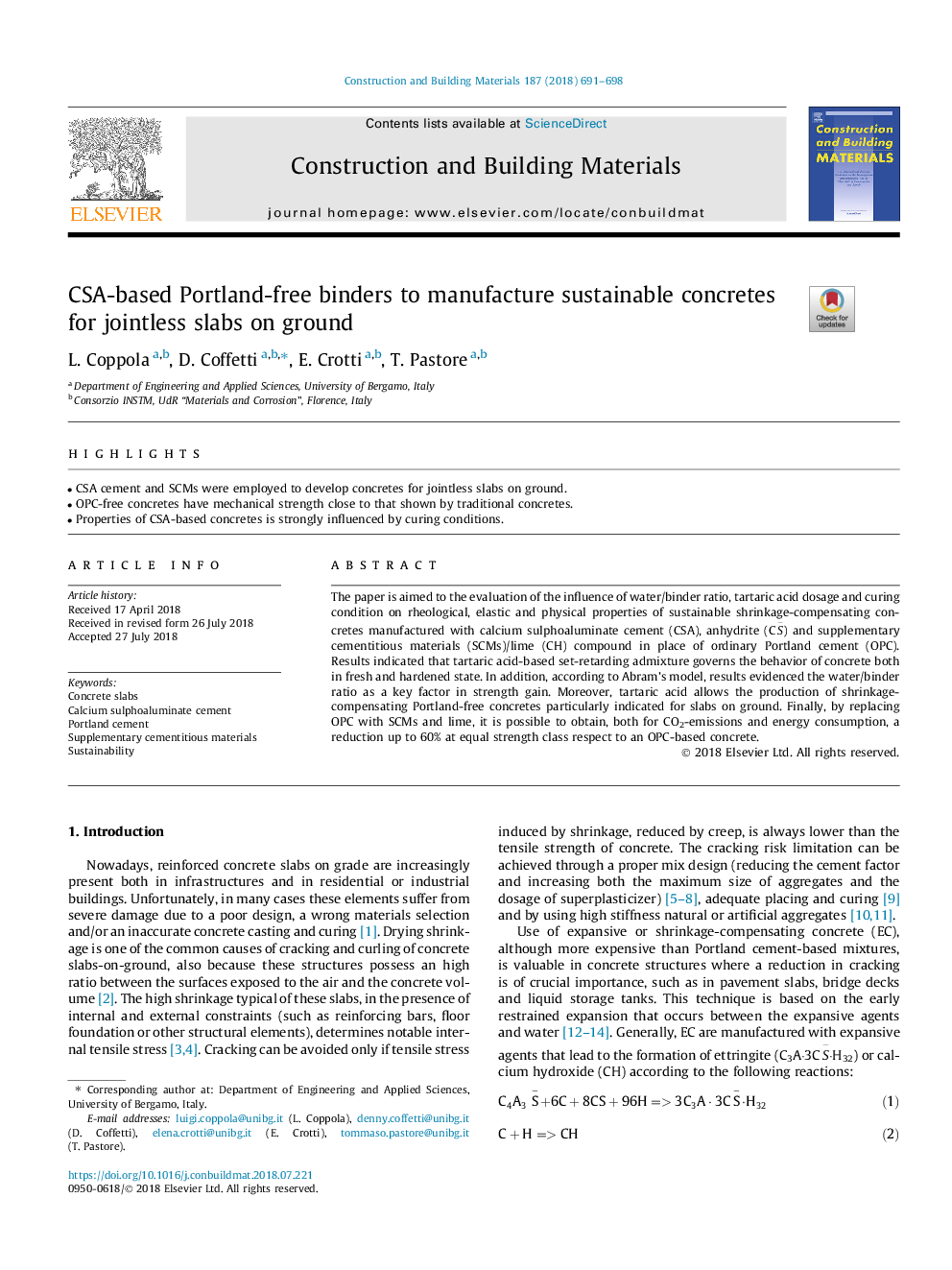| Article ID | Journal | Published Year | Pages | File Type |
|---|---|---|---|---|
| 6711485 | Construction and Building Materials | 2018 | 8 Pages |
Abstract
The paper is aimed to the evaluation of the influence of water/binder ratio, tartaric acid dosage and curing condition on rheological, elastic and physical properties of sustainable shrinkage-compensating concretes manufactured with calcium sulphoaluminate cement (CSA), anhydrite (CS¯) and supplementary cementitious materials (SCMs)/lime (CH) compound in place of ordinary Portland cement (OPC). Results indicated that tartaric acid-based set-retarding admixture governs the behavior of concrete both in fresh and hardened state. In addition, according to Abram's model, results evidenced the water/binder ratio as a key factor in strength gain. Moreover, tartaric acid allows the production of shrinkage-compensating Portland-free concretes particularly indicated for slabs on ground. Finally, by replacing OPC with SCMs and lime, it is possible to obtain, both for CO2-emissions and energy consumption, a reduction up to 60% at equal strength class respect to an OPC-based concrete.
Keywords
Related Topics
Physical Sciences and Engineering
Engineering
Civil and Structural Engineering
Authors
L. Coppola, D. Coffetti, E. Crotti, T. Pastore,
